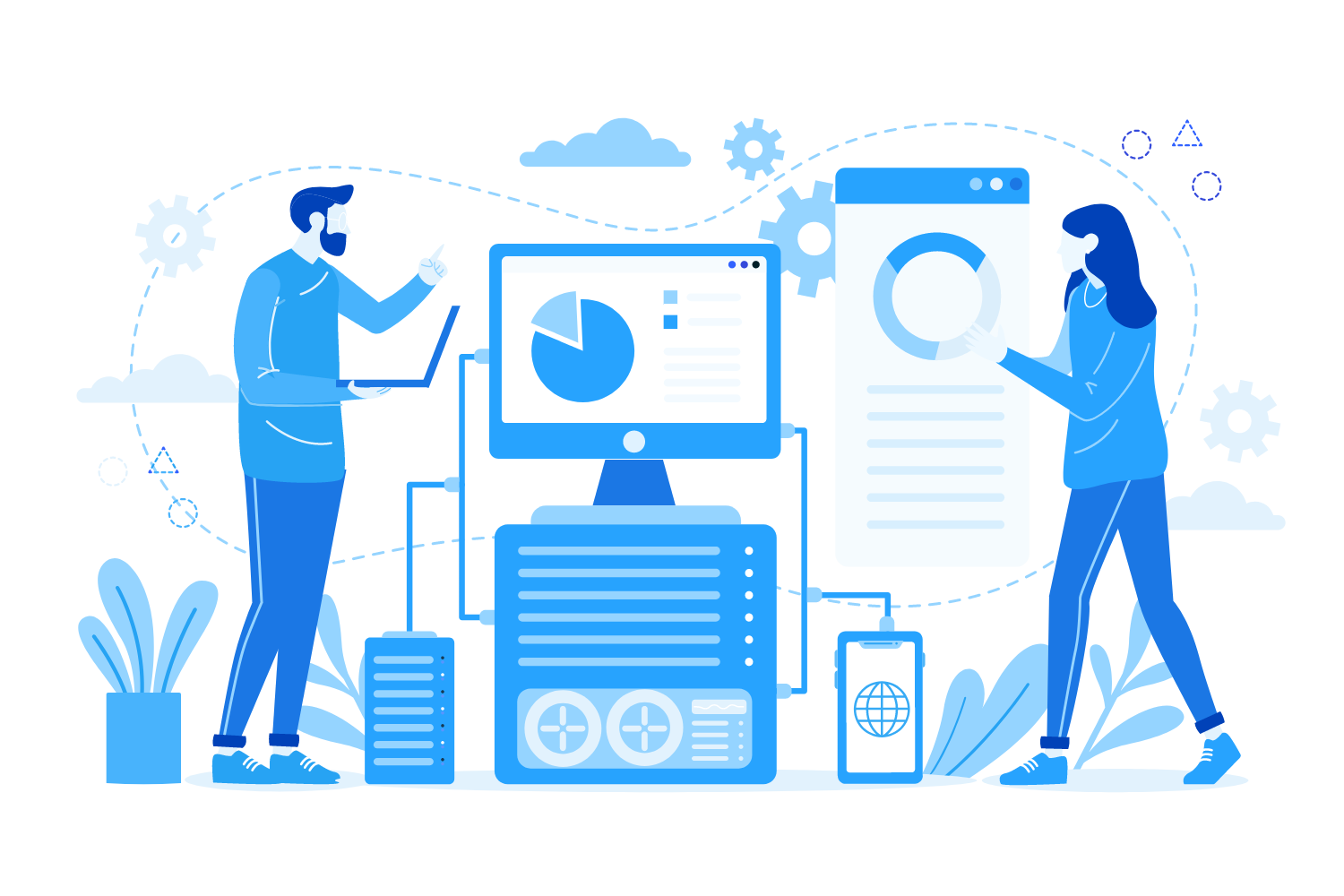How should Brands approach Customer 360?

Krishna
Co-Founder
My first project at my very first job, was building a golden customer record.
“Golden Customer Record”? What is it? Let’s dive in!!

Let me start with a little bit of my own history dealing with the topic of customer data. At the start of my career, about 17 years back, I had worked as a programmer analyst at a company, let’s call it “C”, that often ranked in the top 100 best companies to work for.
“C” was an international company with operations in multiple countries. “C” sold products and services that helped engineers save time and be more productive, and companies to ship reliable products, respectively.
However, as the business grew, so did the customers’ dissatisfaction. An engineer who is a user of “C” s product, would call in to get support that they had paid for, but would be politely denied the level of service they were expecting, leading to an unhappy customer experience.
You might be wondering why a customer who paid for a service would be denied service by a company known to care for its customers? The answer lay in how the customer data was stored in the systems and how it was made available to the users of these systems. It was not uncommon to find the same customer having multiple records in “C” s internal systems and the entitlements that belong to these customers tied to these different accounts.
When a customer support representative looking for the service levels of this customer pulls up one of these records that doesn’t have the entitlement tied to it, and they weren’t careful/knowledgeable enough to look for alternate records, then that often meant a poor customer interaction.
To solve this problem, a team of engineers and business analysts were brought together to-
- Create a golden record of the customer: one master identifier for the customer mapped to all the identifiers of the customer using clustering algorithms and some human interaction.
- Identify and attribute all entitlements and interactions of this customer to the golden record.
- Send the golden record information to internal systems so that:
- a customer support person looking up a customer will always find the right entitlement or service level.
- a salesperson can see the recent interaction and usage of the products by the customer.
- a marketing person to see what products or service they could upsell to an existing customer.

This initiative had a positive impact on the overall customer experience which prompted “C” to invest more into this initiative and keep improving their customer data.
It took us about 2 years and close to 10 resources to get this project done. This happened in 2007, when cloud technologies were just being explored, and all software sold was on-premises with upfront payment and annual support models. So, companies had to either commit to these expensive initiatives or didn’t due to these upfront costs involved.
In my case, the golden record initiative cost the business a few million dollars. Technologies used were ETL and integration software, a data warehouse, and a software that did clustering algorithms well.
A lot has changed since 2007; smartphones, social media, streaming services, cryptocurrencies, and even the discourse on climate change to name some. However, the rise of eCommerce, the increasing importance of data, cloud technology, and the decreasing cost of storage are what is pertinent to this discussion.
In 2007, eCommerce was still in a nascent stage, but it has since become a major part of the global economy. Today, eCommerce has changed the way many businesses operate, and the way consumers shop, in addition to generating a lot of data and the need to make sense of that data.
Cloud computing allows businesses and individuals to access and use computing resources on-demand, without the need to invest in and maintain their own physical infrastructure. This has led to the widespread adoption of cloud technology in a variety of industries, as it allows for greater flexibility, scalability, and cost-efficiency.
In addition, the rise of cloud technology has also enabled the development of new business models, such as software as a service (SaaS), in which software is delivered over the internet on a subscription basis.
Some of the changes since 2007 have had a profound impact on how business gets conducted and how technology is delivered. What didn’t change over the last 15 years is the need for any business to own their “Golden Customer Record” also known as a “Unified Customer Record”, “Customer 360”, “Single Customer View”, so on and so forth.
In my current role, I focus my time exclusively on eCommerce and DTC brands and sellers. After over 1000s of interactions with various stake holders at these companies, I observed that:
- Few lean, fast-growing brands wanted a Golden Customer Record but settled for a CDP.
- Few fast-growing brands that wanted a Golden Customer Record only used this data for marketing.
- Most Brands weren’t even aware that there was a problem and/or didn’t have a great grasp on their customer data.
- Few Brands developed a Golden Customer Record using the same techniques (although different technologies) as we did back in 2007.
- Few brands knew what they wanted to do with their customer data and took some initiative, but that didn’t work, and they abandoned it altogether.
- Few brands knew what they wanted to do with their customer data but didn’t take any initiative.
It is the marketing team in most cases that drove the need for the Golden Customer Record. And in most cases, the marketing team adopted a technology called as CDP or Customer Data Platform.
Understanding CDPs
CDP, or Customer Data Platform, is a technology used by businesses to collect, integrate, and manage customer data from a variety of sources. A CDP is designed to provide a single, unified view of a customer, allowing businesses to better understand and engage with their customers through personalized marketing and other customer experiences.
CDPs typically include features such as data integration, data cleansing and enrichment, data governance, and data analytics. They may also include tools for segmentation and personalization, as well as integrations with other marketing and customer relationship management (CRM) systems.
CDPs made it easy for marketers to get access to the customer data without having to rely on internal IT and data teams. Marketing and sales move at a faster pace in comparison to the rest of the organization and that places a greater demand on the IT and data teams to be nimbler in supporting the needs of the marketing team. Unfortunately, the reality is that marketing often goes off on their own and procure OOTB solutions like a CDP to fulfil their customer data needs.

If CDPs gave the customers all they need, then what is the problem? One might be tempted to ask. Here is my take. Any company should-
- Take ownership of your customer data.
- Have a single source of truth for customer data.
- Treat customer data as a business asset and not just a marketing asset.
- Avoid duplicating efforts on data projects through better internal alignment.
- Consolidate systems and avoid paying for and maintaining multiple systems that do similar things.
Pitfals of CDPs
Unfortunately, CDPs don’t pass all the criteria above, are expensive, and dare I say, irrelevant in 2023. Why?
- CDPs store data in their data warehouse, not yours. They can choose to expose it to you, but the data belongs to you in the first place.
- A single source of truth of customer data is not possible, when this data is in some 3rd party system, not well integrated or accessible by everyone in the business and is paid for from the budget of one team. What if their budget is slashed next year?
- Wouldn’t customer support be interested in knowing whether the customer who opened a ticket is a high-value customer? How would they know if their system is not integrated with the single source of truth of customer data?
- A mini version of customer data is often developed to support needs of finance and other teams.
- Why should I pay for a turnkey solution for attribution, LTV metrics, a unified customer record when all these capabilities are needed and can be built on the same underlying datasets?
Conclusion
I have always been a believer in the approach we took back in 2007. The approach was simple, elegant, scalable, and well integrated with the rest of the decision support systems used by everyone in the company. We used a data warehouse. With the rise of ELT tools like our own product, Daton, data warehouses like Big Query and Snowflake, customers can quickly build a Golden Customer Record with the help of a capable data team at a fraction of the time and cost that it had taken us back in 2007.
With the recent changes in iOS, reduced efficiency in social media advertising, higher interest rate, and a welcome pivot to focusing on profitability, customers will be compelled to focus on owning their customer data, building lasting relationships with their customers, and activating the data to achieve profitable outcomes across the business functions.
I will write more on how companies can build their own Golden Customer Record in a follow up article.




